An Electric Motorcycle Team Attempted the Brutal San Felipe 250
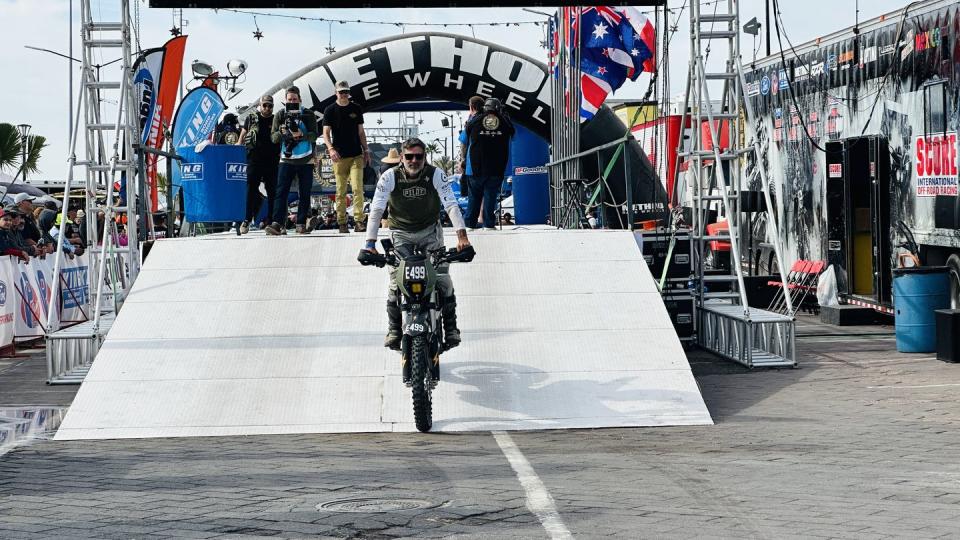
Sometimes, you just want to be the first to do something. The first to score 100,000 points on Pac-Man, the first to climb Everest, the first back to get seconds of pie. Christian Klein and his pals in the Pilot Off-Road team wanted to be the first team to finish an off-road race in Baja California on an electric motorcycle.
They managed to be the first team to start an electric bike in Baja in the 2024 San Felipe 250. The finish part, not so much, but even though it was short, No. E499 had quite a ride.
Pilot Off-Road has some electric company in Baja. Three years ago, Lordstown fielded its electric work truck, but charging issues meant it didn't get more than 50 miles. That same year a privateer, Kyle Seggelin, brought his garage-built electric Toyota 4Runner and made over 150 miles before electrical gremlins took it out.
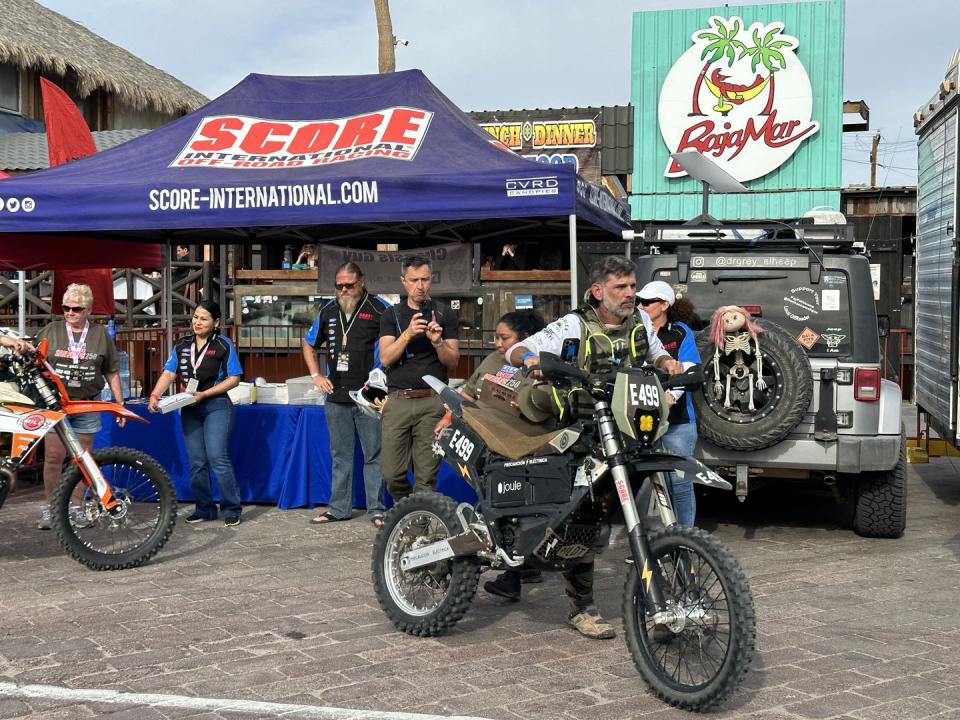
It's sort of surprising that nobody has tried to run an electric motorcycle before our intrepid group out of Austin, Texas, took on the challenge. The batteries are small and don't take much time to charge, and it's pretty easy to modify a bike to allow for swaps. Just purchase a bunch of batteries, charge them, load them up in a chase vehicle, and pit like normal. Easy peasy, right?
It's never easy peasy. Pilot Off-Road had the choice of a Zero FX electric bike or a KTM Freeride. The Zero has two 3.6-kWh batteries but is limited on suspension travel. The KTM goes big on travel but is only equipped with one 3.9-kWh battery, encased in a cast frame that would be difficult to modify for an additional battery.
In the end, the extended range won out and the team chose the Zero (I should note here that they received no help or sponsorship from the company). They made the batteries swappable, changed out the swing arm, added longer travel, and beefed up the front forks. They also added a carrier for a third battery below and rear of the seat for a few precious extra miles when needed.
On the road, the Zero's batteries can carry enough juice for about 100 miles of riding. However, racing has never been an efficient use of energy, be it volts or gasoline, and the team estimated a range of 30 miles. Adding that third battery on longer sections would get them just under 50 miles of range.
Carrying three 38-pound batteries meant the bike was heavier than normal. A stock Zero FX has a curb weight of 247 pounds. A comparable Honda 450X with fuel is 300 pounds or so, but the modified Zero weighs in at a chunky 345 pounds, and it handles differently too. The center of gravity is higher and more forward than in a regular bike. Then it all changes when the third battery is added. Racing any electric has the added complication of lacking the auditory cues that normally help a ride gauge speed and momentum, so Klein had physical and mental challenges ahead for his ride.
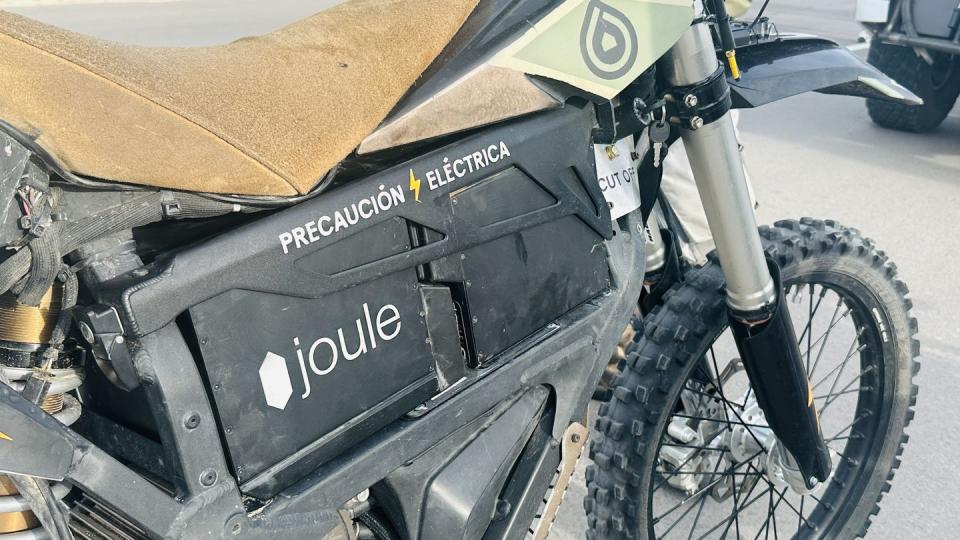
The whole idea was a little nuts, nobody on the team is a professional racer. Driver of record Christian Klein is an industrial fabricator and the other two pilots, Eric Rauser and Branson Fustes, are general contractors, doinking around on the weekends on their dual-sport bikes. None have ever competed before, but they figured they knew what they would be up against. They knew they'd be slow, and they knew slow bikers sometime get run over.
Although the bikes get a two-and-a-half-hour head start in the morning, they share the same racetrack as all the other vehicles. If a motorcycle can't keep a good pace, they will soon get passed by a 6000-pound Trophy Truck, and that, my friends, is scary.
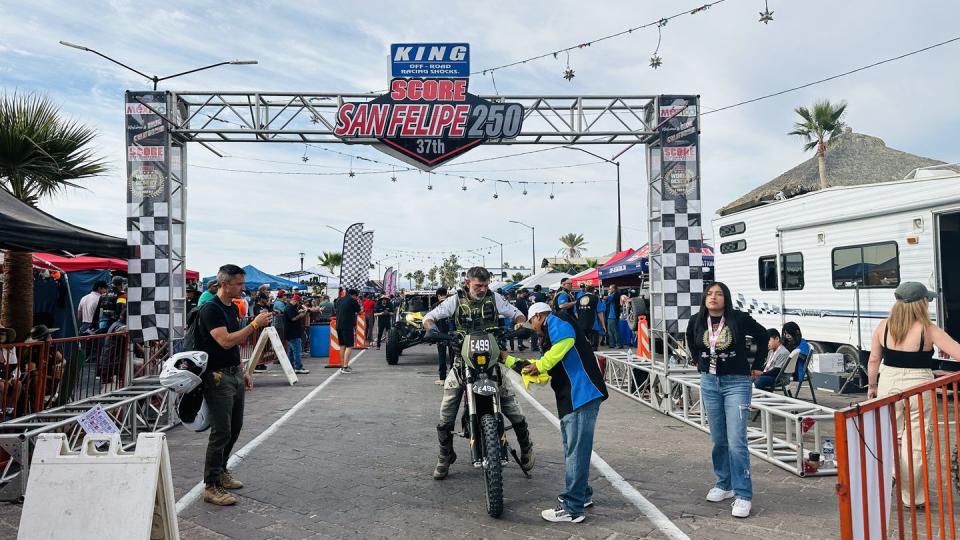
Trophy Trucks can have up to 1000 horsepower and wear 40-inch tires. The winner this year averaged 71 mph. The trucks are going so fast, the drivers looking so far ahead, that a dude on a bike is like a mere speck in their line of sight. Although every race vehicle is equipped with a push-to-pass computer that in theory can signal to a slower driver or rider that a pass is imminent, there isn't always time to use them, or react to them.
With their silent ride, Pilot Off-Road would certainly be able to hear upcoming Trophy Trucks, but often the amount of time between the audible cue and the pass is so quick, there is no chance to pull off the track to let it happen safely. While the ultimate goal was to finish, the team first had to keep ahead of the big trucks.
Charging Protocol
The team purchased 10 batteries before the race, at a cost of $2500 to $3000 apiece. Even that was not enough batteries to get them all the way around the 283.5-mile race course. They knew they'd have to charge on the go, and they wanted to be efficient about it.
"We didn't want to go the Lordstown route and use those giant gas generators," said Klein.
Instead they turned to Joule Case for two 25.0-kWh portable batteries, one for each chase truck. These stored all the power the team would need, but they needed to get the electrons stored in the larger batteries into the Zero batteries, and they'd have to do it on the move.
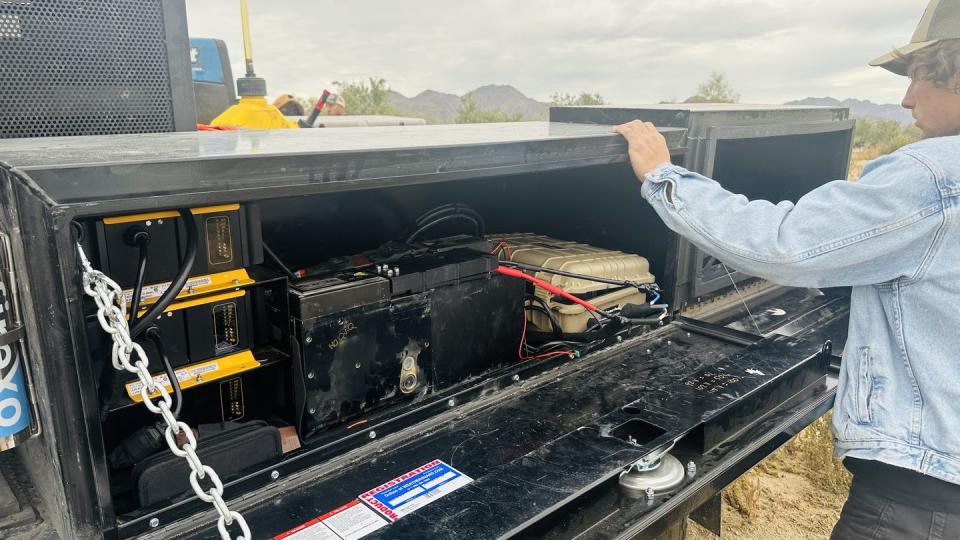
The tech mastermind behind the charging, Willem Vonk, had a lot to say about solenoids and enabling pins, but the lay person's version is that the power goes from the larger 25.0-kWh battery through an inverter to a pair of golf cart chargers and then to the Zero batteries. He cannibalized another Zero FX bike to get the right fitting to connect the chargers to the batteries.
How many times did he fail? "All of them," he says. "Until the one time I didn't."
With a way to charge batteries on the road and two chase trucks that would leapfrog each other around the course for a total of 13 pit stops, all they had to do was move fast enough to stay ahead of the Trophy Trucks, and they'd be golden. Easy peasy.

 Yahoo Autos
Yahoo Autos 